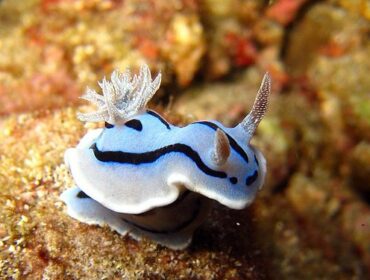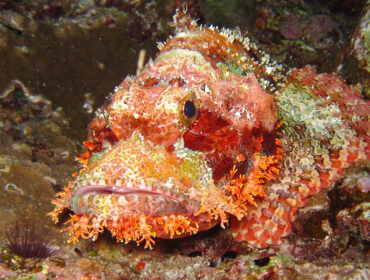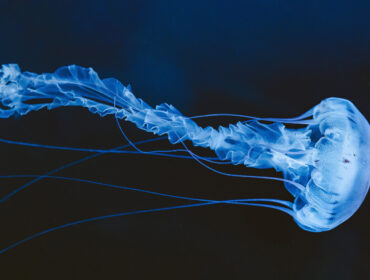Neither a mantis nor a shrimp, but bearing a striking resemblance to both, the Mantis Shrimp is adored by underwater photographers, scuba divers and marine enthusiasts everywhere, both for it’s looks and the fascinating story behind it’s claw. This crustacean from the Stomatopoda family looks and poses like a mantis while it’s tail and claws are similar to a shrimp. The fierce crustacean can grow to 30 centimeters (12 in) in length and are quite the predator in shallow tropical waters. The the harlequin mantis shrimp or painted mantis shrimp, more commonly known as peacock mantis shrimp are the prettiest of the 400 odd varieties that range from shades of browns to bright neon colors.
Sometimes referred to as “thumb splitters”, because they can inflict painful gashes, if handled incautiously, the mantis shrimp sports powerful claws that they use to attack and kill prey by spearing, stunning or dismemberment. Although it happens rarely, some larger species of mantis shrimp are capable of breaking through aquarium glass with a single strike from this weapon like claw.
There are two distinct groups of mantis shrimp, based on the kind of claw they posses-
- Spearers: Their appendages are spiny and topped with barbed tips, used to stab and snag prey.
- Smashers: This kind of mantis shrimp possess a much more developed club like claw along with and a spear like one. The club is used to bludgeon and smash their meals apart, while the spear is used in other fighting maneuvers, especially among their own kind.
Both kinds, pack a mean punch and have earned a reputation of being fierce predators with the ability to cause significant damage on victims far greater in size than themselves. The latter type though, can strike with it’s club claw, with an acceleration of 10,400 g-force (102,000 m/s2 or 335,000 ft/s2) and speeds of 23 m/s from a standing start, (i.e about the acceleration of a .22 caliber bullet). Just like in the case of the Pistol Shrimp, one of the loudest creatures on Earth, the action of the shrimp’s strike generates cavitation bubbles between the appendage and the striking surface. The pop of such bubbles produces measurable forces of up to 1,500 newtons, because of the impact of the appendage against the striking surface. The resulting shock wave, from this bubble alone can be enough to kill or stun the prey. The bubble even produces sonoluminescence: light and heat ranging in temperatures of several thousand kelvins within the collapsing bubble. However, both the light and high temperatures are too weak and short-lived to be detected without advanced scientific equipment.
Another fascinating feature of the mantis shrimp is its eyes. Capable of perceiving both polarized light, and hyperspectral color vision, their eyes which are mounted on stalks can move independently of one another. The mantis shrimp’s eyes are even considered to be one of the most complex eyes in the animal kingdom by far.
While diving this large shrimp is native to the Indo-pacific region from Guam to East Africa.




